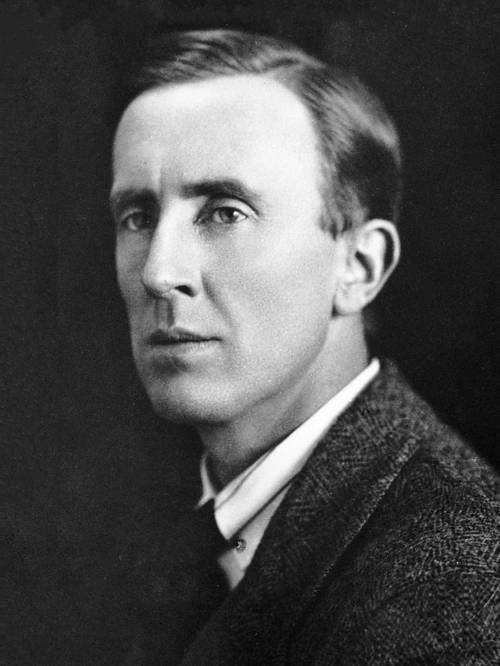
FAQ About J.R.R. Tolkien

Who was J.R.R. Tolkien?
J.R.R. Tolkien, or John Ronald Reuel Tolkien, was a renowned English writer, poet, philologist, and academic best known for his high-fantasy works 'The Hobbit' and 'The Lord of the Rings'. Born on January 3, 1892, in Bloemfontein, South Africa, Tolkien became an influential figure in the literary world and significantly shaped the fantasy genre.

What are the most famous works of J.R.R. Tolkien?
The most famous works of J.R.R. Tolkien include 'The Hobbit', published in 1937, and 'The Lord of the Rings', published between 1954 and 1955. These books are set in the fictional universe of Middle-earth and have become landmarks in fantasy literature, appreciated worldwide for their imaginative storytelling and complex world-building.

How did J.R.R. Tolkien contribute to the fantasy genre?
Tolkien is often credited with popularizing the fantasy genre as we know it today. His works, notably 'The Lord of the Rings', have set a high standard for world-building, with extensive lore, languages, and history intricately woven into his narratives. He introduced readers to detailed and immersive realms, serving as inspiration for countless subsequent fantasy writers.

What influenced J.R.R. Tolkien's writing?
Tolkien's writing was influenced by a variety of sources, including his personal experiences, Norse and Celtic mythology, his academic background in philology, and his love for the rural English countryside. The horrors of World War I, which he experienced firsthand, also left a lasting impact on his portrayal of war and heroism in his works.

Who were the members of The Inklings, and what was Tolkien's role in the group?
The Inklings was an informal literary discussion group associated with the University of Oxford, active between the 1930s and 1949. Its members included C.S. Lewis, Owen Barfield, Charles Williams, and others, including J.R.R. Tolkien. Tolkien was one of the founding members, and he shared and discussed his work, receiving valuable feedback, particularly for 'The Lord of the Rings'.

Where did J.R.R. Tolkien find inspiration for his fictional languages?
Tolkien, a philologist, was fascinated by languages from a young age. His study and teaching of languages such as Old English, Welsh, Finnish, and others inspired him to create fictional languages like Quenya and Sindarin for his Middle-earth universe. He meticulously crafted these languages' grammar, vocabulary, and writing systems, reflecting his deep love for linguistic intricacies.

What is the significance of Middle-earth in Tolkien's work?
Middle-earth is the fictional setting where most of Tolkien's stories, including 'The Hobbit' and 'The Lord of the Rings', take place. It is a richly detailed world with its own geography, history, cultures, and languages. Middle-earth reflects Tolkien's desire to create a mythological history for England, influenced by both real and imaginery elements. It's a testament to his world-building genius and remains central to his literary legacy.

How did Tolkien's experiences in World War I influence his writing?
Tolkien served in the British Army during World War I, experiencing the horrors and camaraderie of trench warfare. These experiences profoundly influenced his writing, evident in his depictions of epic battles and the themes of friendship, loss, and the trauma of war present in 'The Lord of the Rings'.

What are some lesser-known works by J.R.R. Tolkien?
Beyond his famous novels, Tolkien also wrote several lesser-known works such as 'The Silmarillion', 'Unfinished Tales', and 'The Adventures of Tom Bombadil'. These works provide deeper insights into the lore and history of Middle-earth, expanding on themes and characters touched upon in his main novels.

How did J.R.R. Tolkien's academic background influence his writing?
Tolkien was a philologist and a professor of Anglo-Saxon at the University of Oxford. His deep knowledge of language, mythology, and medieval literature significantly influenced his writing style and content, as seen in his rich narratives and the fictional languages he created for his books.

What academic positions did Tolkien hold during his career?
J.R.R. Tolkien held several academic positions throughout his career. He was a reader in English Language at the University of Leeds in 1920, later becoming a professor there. In 1925, he became the Rawlinson and Bosworth Professor of Anglo-Saxon at Oxford and continued as a professor and fellow at Pembroke College until he retired in 1959.

How has Tolkien's work influenced modern fantasy literature?
Tolkien's work has had a monumental impact on modern fantasy literature. His style of creating extensive and immersive worlds with deep history, rich characters, and intricate languages helped define many elements that are now staples in the genre. Authors such as George R.R. Martin and Robert Jordan have cited Tolkien as a significant influence on their own works.

What are some common themes in J.R.R. Tolkien's works?
Tolkien's works often explore themes such as the struggle between good and evil, the importance of friendship and loyalty, the impact of choices and sacrifices, the beauty of nature, and the corrupting power of greed and power. These universal themes resonate throughout his stories, giving them timeless relevance.

Did J.R.R. Tolkien write any poetry, and if so, what is notable about it?
Yes, J.R.R. Tolkien wrote poetry, much of which is embedded within his novels. His poetry often merges with his mythological storytelling style, contributing to world-building with songs, ballads, and elegies that enrich his narratives. His collection 'The Adventures of Tom Bombadil' is one example of his standalone poetry.

What is the story of 'The Hobbit'?
'The Hobbit' is a fantasy novel by J.R.R. Tolkien that follows the journey of Bilbo Baggins, a hobbit who is thrust into an unexpected adventure with a group of dwarves and the wizard Gandalf. Their quest is to reclaim the Lonely Mountain and its treasure from the dragon Smaug. The story is known for its themes of personal growth and heroism.

How long did it take Tolkien to write 'The Lord of the Rings'?
Tolkien took about 12 years to write 'The Lord of the Rings'. He began writing it in 1937 as a sequel to 'The Hobbit' and finally completed it in 1949, after numerous revisions and interruptions during World War II. The book was subsequently published in three volumes between 1954 and 1955.

What is the basis of Tolkien's fictional calendar system in his books?
Tolkien's Middle-earth novels feature a detailed calendar system inspired by various historical and legend-based calendars. His attention to detail is evident in these systems, which include multiple cycles of the sun and moon, and a unique reckoning of days, months, and years. This adds depth to the universe by reflecting different cultures within Tolkien's work.

What role did C.S. Lewis play in J.R.R. Tolkien's writing process?
C.S. Lewis, a close friend and fellow member of The Inklings, played an instrumental role in Tolkien's writing process. Lewis provided critical support and encouragement for Tolkien's work on 'The Lord of the Rings' and often praised Tolkien's creativity. Their mutual support and exchange of ideas greatly enriched both their works.

How did the publishers initially respond to Tolkien's work?
Initially, publishers had mixed responses to Tolkien's work. While 'The Hobbit' was well-received, early drafts of 'The Lord of the Rings' faced some resistance due to its length and complex narrative. However, Rayner Unwin, a publisher who championed 'The Hobbit', showed confidence in Tolkien's epic saga, leading to its eventual publication and success.
